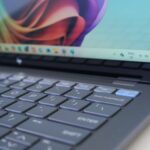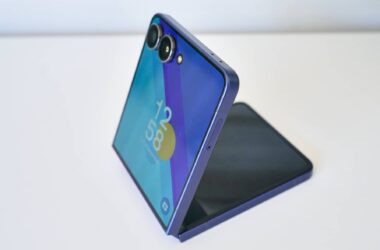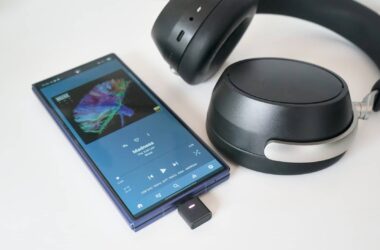Quick review
The good
The not-so-good
Qualcomm can be found inside many an Android phone, but what about Windows laptops? With the HP OmniBook X 14, you’ll get that inside of a perfectly portable PC.
It’s not just Intel and AMD making Windows laptops now, as Qualcomm brings its mobile expertise to the Windows world in the age of the AI PC.
The announcement delivering Snapdragon chips to Windows laptops came in the middle of the year, and the first few CoPilot+ AI PCs are beginning to arrive now, just in time for the holiday season, and subsequent new work and school year buying seasons.
So what makes these new models interesting, and is the first one we’re seeing, the HP OmniBook X 14, worth checking out?

Design
Decked in a simple silver and with a rounded lip for the top and bottom sections, HP’s OmniBook X 14 isn’t a sexy machine, and it’s also not a sleek system.
It is a laptop plain and simple, and one that will appeal to folks looking for a computer that’s easy enough on the eye but won’t draw too many glances.
Somewhere between the simplicity of a sliver of silver and the durability of aluminium, HP has struck a balance for the sake of the OmniBook. You might say it’s just enough of a design for everyone, which may well be where the whole “omni” part of the name comes from.

Features
Inside, you’ll find a Qualcomm Snadragon X Elite chip, one of the first laptops armed with Qualcomm’s recent variety of PC-ready chips, something that has been paired with 16GB RAM and 1TB storage, at least in our review model.
Microsoft’s Windows 11 Home arrives on the OmniBook X 14 out of the box, complete with a few wired and wireless connections.
There are two USB-C connections on the left side, one of which is set for 40Gbps and the other 10Gbps, while an old-school rectangular USB-A port on the right can be opened with a handy flip part in the laptop design. Both of those USB-C ports handy DisplayPort, too, useful given there’s no HDMI port on the X 14, while a 3.5mm on the right side provides sound out.

On the wireless side of things, the OmniBook X 14 offers support for 802.11a/b/g/n/ac/ax/be WiFi 7, while Bluetooth is catered to using version 5.4.
You’ll also find a 5 megapixel camera built into the frame, two microphones, and a two speaker system in a laptop weighing 1.34kg.
| Model | HP OmniBook X 14 (A42H8PA) |
| Chip | Qualcomm Snapdragon X Elite |
| RAM/Storage | 16GB RAM; 1TB |
| Display | 14 inch IPS touchscreen 2240×1400 60Hz |
| OS | Windows 11 Home |
| Connections | WiFi 7, Bluetooth 5.4, USB-C, USB-A, 3.5mm |
| Size/Weight | 1.44cm, 1.34kg |
| Price | Starting from $2599 AUD |
Display
Armed with a 14 inch 2240×1400 60Hz IPS screen, the OmniBook X 14 is certainly easy enough on the eyes, but doesn’t shine the way an OLED display would. Given there are OLED Windows laptops about the place, this is the sort of thing that can really matter.
There’s a layer of Corning’s scratch-resistant Gorilla Glass here, plus a blue light filter to give your eyes a bit of relief, but the bezels on the screen aren’t razor thin like you might expect from the latest machines today.
It’s an acceptable screen, for sure, but you can do better.

In-use
That screen is also a touchscreen, giving you another way of using Windows should you choose to: you can reach out and touch the display.
However, for most things, you’ll like be using the keyboard and trackpad, parts of the package that do the job, but are hardly the best in the business, at least from our experience.
Typing this review on the laptop on our lap, the clicks of the keyboard have a touch more travel than you may expect, and each island key certainly goes down to the right action, but it never feels as good on a table. The keys can feel plasticky at times, making it fine keyboard, but just not the best out there.
It’s a similar experience using the trackpad, which requires a fairly firm press in order to get a click out the thing, and mostly seems to want you lightly touching it as a touchpad.
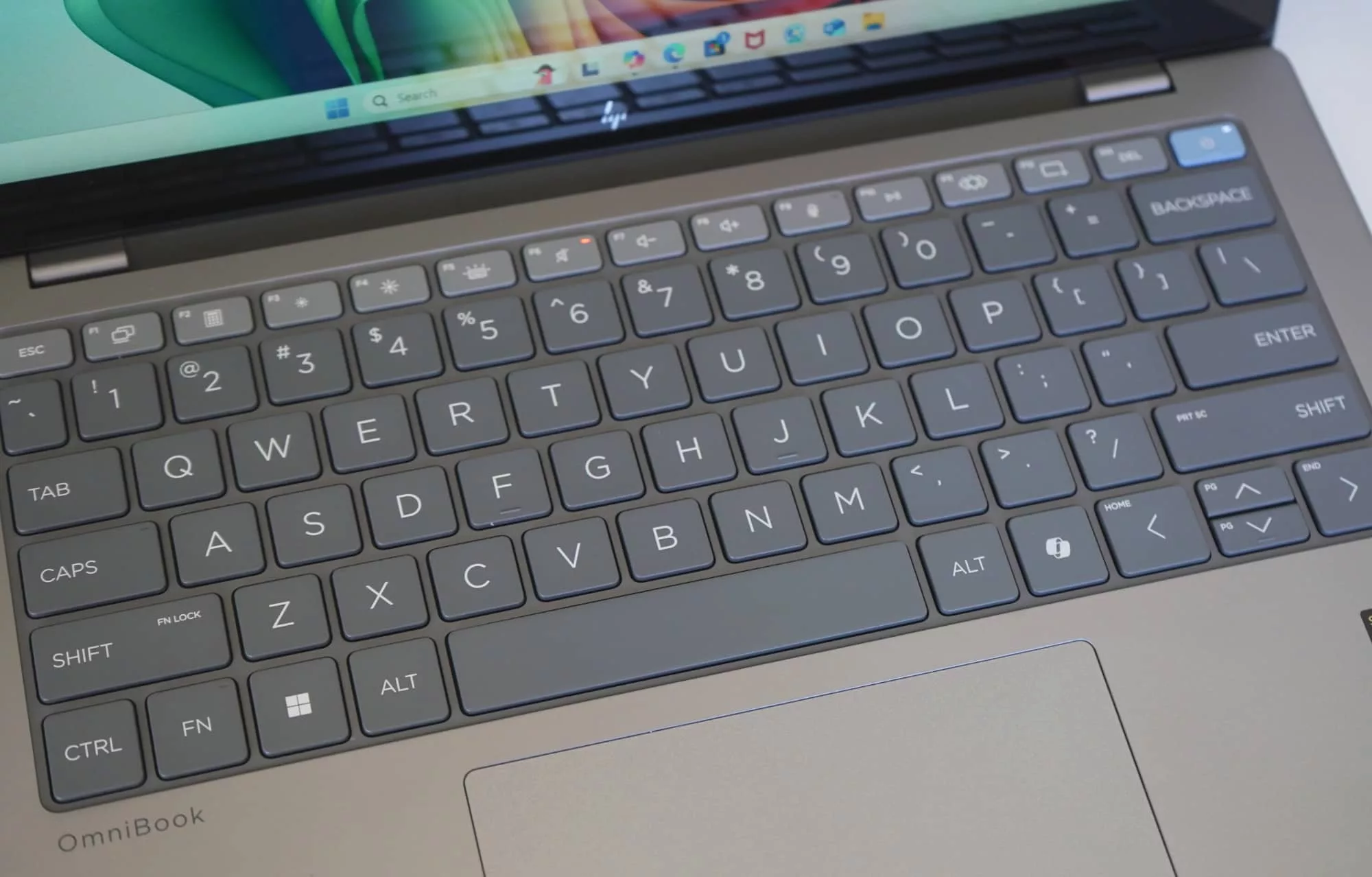
The speakers could also be a touch better. They’re certainly loud enough, but there’s virtually no low end to the sound and everything you get is highs with some mids. They’re shallow for sure, and practically imply HP spent no time refining or tweaking the speakers found on this laptop. A shame, too.
At least the webcam up top has something useful and not seen on every laptop: an easy slide-over privacy filter, handy for when switching video off in zoom calls just isn’t enough.
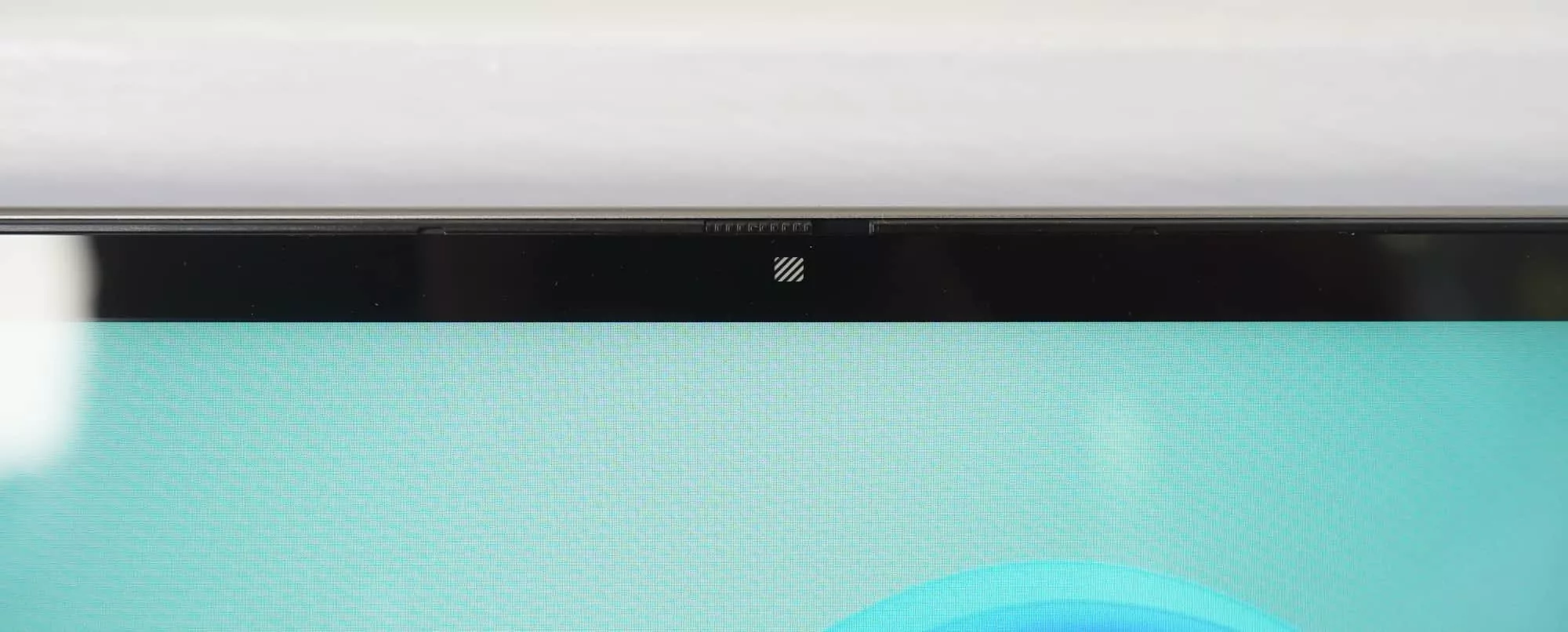
AI features
One of the main reasons you might consider a Snapdragon Windows PC is because of what Microsoft classes the machine as: a CoPilot+ PC. Specifically, an AI PC, because everything seems to have AI in it these days, PCs included.
For the HP Omnibook 14, that includes using the Windows CoPilot key to trigger the ChatGPT-connected CoPilot app to help you with text, to dabble in the evolution of Microsoft Paint to use generative AI to make images on your machine, to apply image effects to the webcam when you need it, and to tap into Microsoft’s “Recall” feature which regularly screenshots your activity and will eventually let you search through it.
But that is largely it. AI might be useful for some in a computer, but it’s still not quite there yet, and we’re not sure HP has really added anything to the package here.
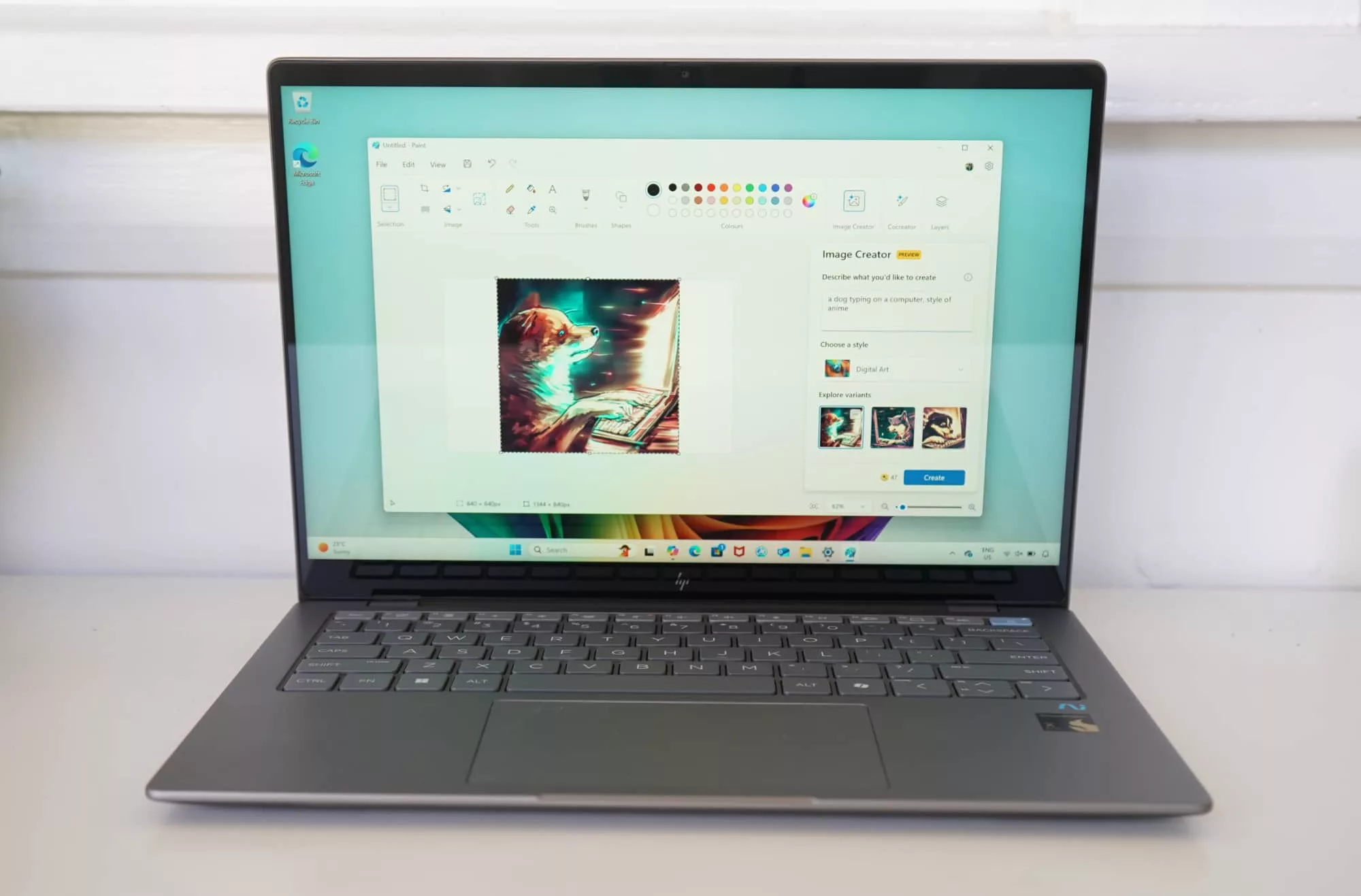
Performance
That may not matter, however, but using the computer will. And for that, we dive into performance.
Laptops with Snapdragons inside are still relatively new, and so in 2024, the OmniBook X14 is the first Snapdragon X Elite laptop that we’re checking out. That gives it the distinct honour of seeing just how well the Snapdragon hardware performs against the typical assortment of Intel and AMD chips normally seen on Windows laptops we review.
Initially, the result isn’t bad, with synthetic benchmarks showing the Snapdragon X Elite can hold its own against the recent Intel Core Ultra and AMD Ryzen chips laptops have seen, and even push back a little against Apple’s own silicon in the MacBook Air models.
Where it gets problematic is if you bench the Qualcomm Adreno graphics component of the processor against other laptops already found in the market. You’ll quickly find it just can’t compete, and even as good as Android graphics using Qualcomm hardware is, on a Windows PC, it just doesn’t hit the same benchmark score.
Fortunately, most people won’t have to worry about this, particularly given the OmniBook X 14 is more geared as a day-to-day working computer. It might play games, but it probably won’t play many.
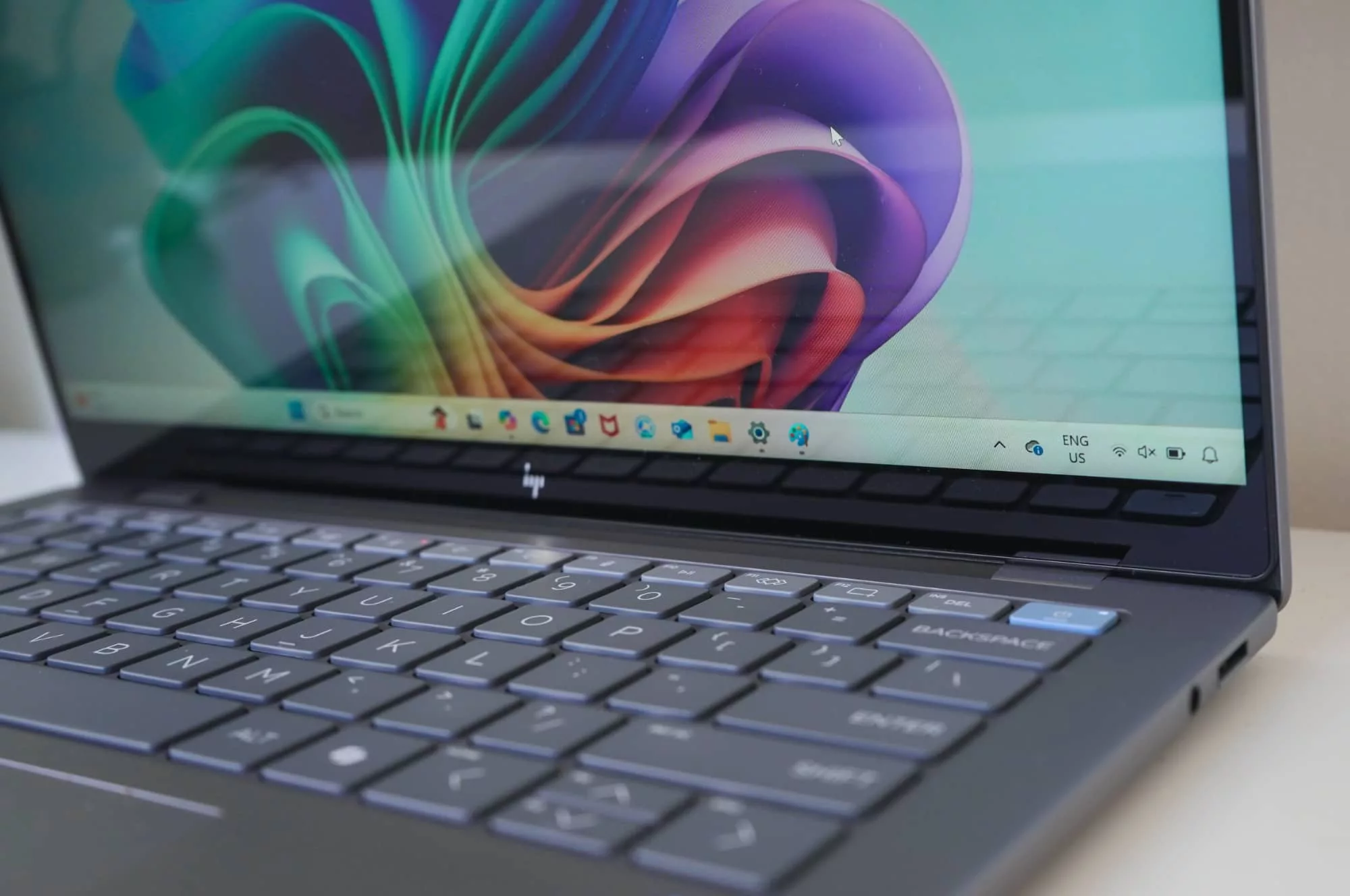
Battery
In terms of battery life, our time with the HP OmniBook X 14 showed the Snapdragon was able to get between 10 and 12 hours of life for regular productivity usage, which isn’t bad, but certainly also isn’t mind-blowing.
The system feels like it shouldn’t be able to get more, and to HP’s point, it apparently can, provided you just watch movies on the thing without a lot of brightness. Officially, the 26 hour battery life of the OmniBook X 14 is matched with the following caveat:
"Battery life tested by HP using continuous FHD video playback, 1080p (1920x1080) resolution, 200 nits brightness, system audio level as image default, player audio level at 100%, played full-screen from local storage, headphone attached or through speaker (if no audio jack port), wireless on but not connected."
Those are some pretty specific requirements, especially when you consider the Full HD playback is already at odds with the 2240×1400 resolution on the laptop itself, and that’s before you discount the whole thing that watching videos is hardly a taxing exercise, nor the sort of thing a productivity computer is likely be used for except on long-haul flights. Having “wireless on but not connected” is about the most unrealistic of the whole thing, because WiFi is pretty much a requirement of life.
Real-world usage for this reviewer puts the laptop closer to half of what HP suggests, which is definitely better than a lot of other laptops, and yet also feels lacking. That nearly 30 hour promise clearly comes with a catch.
At least charging the X 14 is easy: plug in a USB-C charger and you’ll be right. The included battery pack is about as sleek as the rest of the package, which is to say it isn’t very, using the same old logic of a black battery pack with a bolted in USB-C cable and needing to bring with the typical three prong plug cable.
We wish laptop makers outside of Apple would find ways to make the charge pack prettier, but it clearly won’t be on this HP.
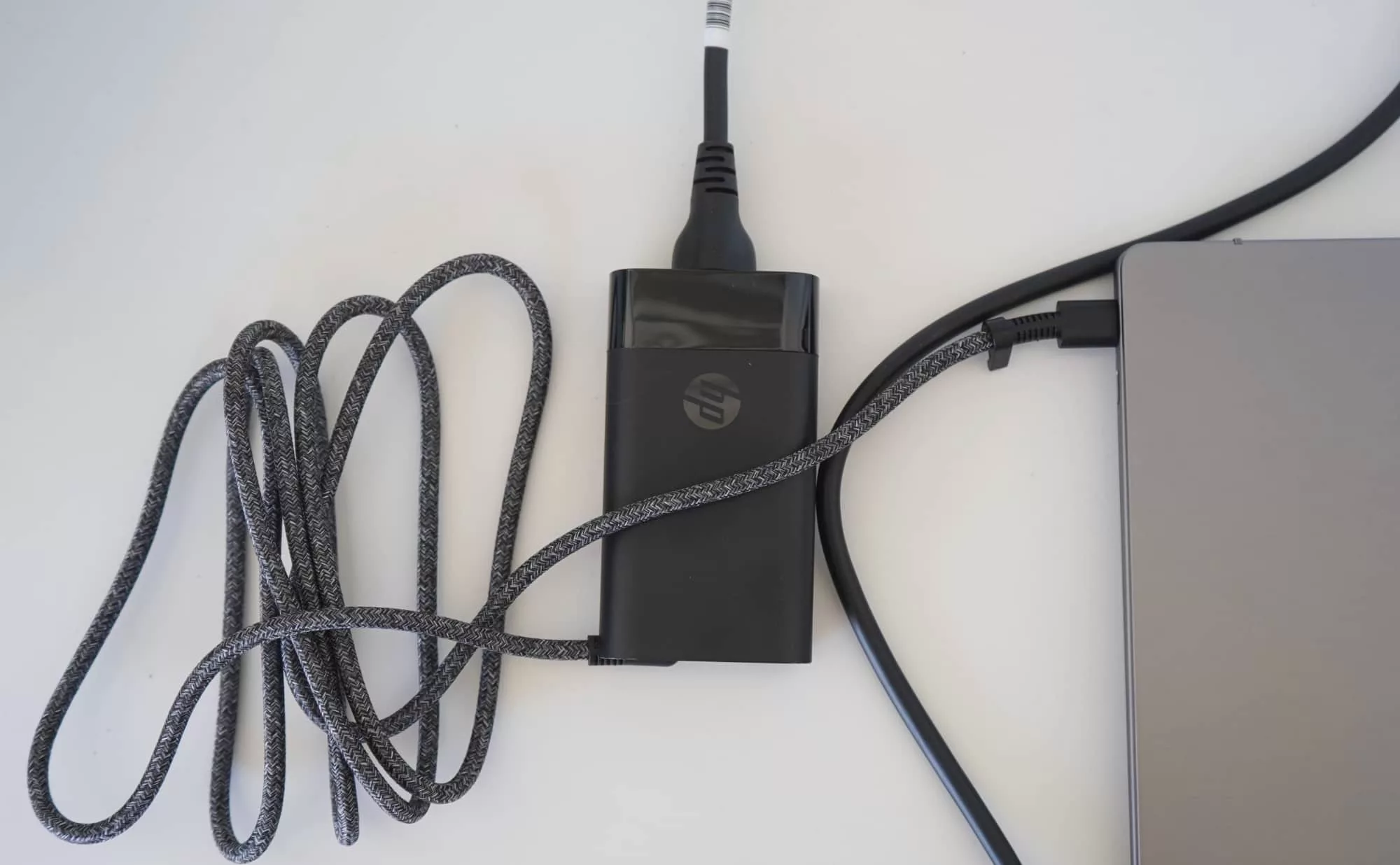
Value
The package feels even less special when you weigh up the X 14’s price.
Available in Australia from $2599, the HP OmniBook X 14 feels just a little overpriced for what you’re getting. In fairness to HP, it’s probably technically just right, thanks in part to the generous supply of memory and storage, as well as the touchscreen you probably won’t use.
But it feels overpriced because the X 14 can feel so ordinary. So ho-hum.
What needs work?
What is essentially just a work-ready laptop, the HP OmniBook X 14 is successful in delivering a decent productivity system made to be light, simplistic, and easy to carry around.
Where it struggles is being the least bit different than anything else out there.
There’s not much that makes the OmniBook X 14 stand out. Yes, it’s a productivity machine, and it’s one you can easily take with you. That is about it.
Not helping this is the rather useless bit of AI you might never use, trackpad that doesn’t always feel responsive, a keyboard that can at times feel cheap, and some speakers that come across as really quite shallow.
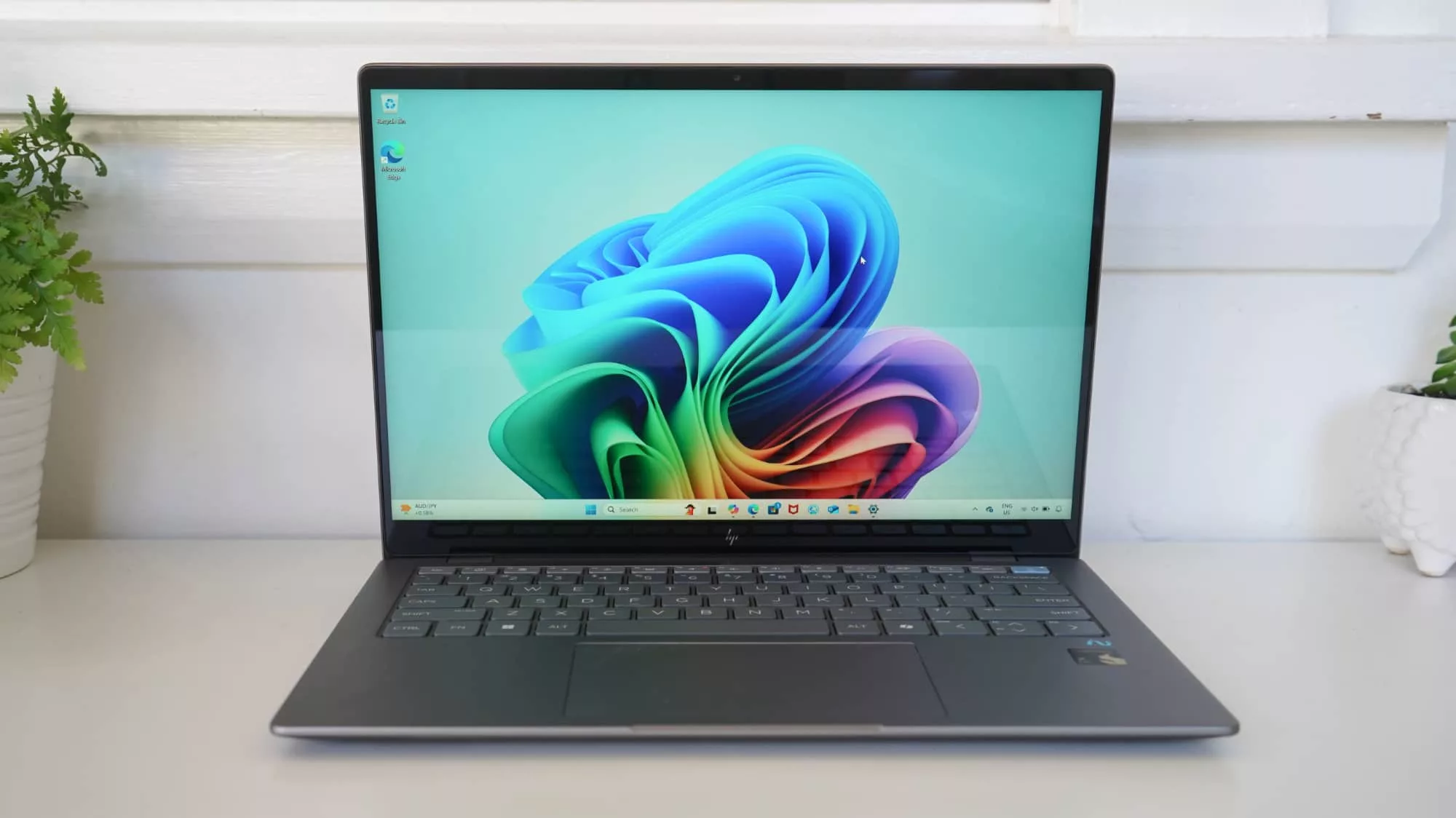
Final thoughts (TLDR)
In short, the HP OmniBook X 14 is a laptop made for working pretty much anywhere today, but not much else. The slim design and light weight make it practical and portable, and the battery life is technically capable, as well.
But that’s it. There’s not much else to the OmniBook.
And look, that’s not necessarily a bad thing: there are many reasons why having a perfectly fine computer with no extra whiz bang special features is fine. It’s just that there are also better computers for the $2599 price point HP has targeted.
Business folk may want to look at the OmniBook X 14, but we would suggest shopping around, because for nearly $3K, you should be able to get that little bit more bang for your buck.
